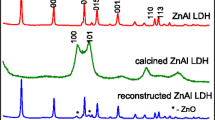Conclusions
Some properties of anions which affect the extraction of their ionic associates with organic cations have been studied in the present paper. A comparison of these properties is exceedingly difficult even for ions of a single type. Almost any change in the composition of the ion (for example, the substitution of one ligand for another with similar properties: Cl and Br) involves the simultaneous change of the size and effective charge of the ion, the metal-ligand bond stability, and so on. It is not always possible to isolate the factor which has the main influence on the properties of the associate. Besides, the maximum activity of various ions is observed at various acidities in the aqueous phase, and the acidity strongly affects the activity of the dye and its tendency toward association [5]. Nevertheless, the relationships developed herein allow us to interpret the experimental material in several cases and do not exclude the possibility of making predictions for the trends studied.
Similar content being viewed by others
Literature cited
R. M. Diamond and D. G. Tak, Extraction of Inorganic Compounds [in Russian], State Atomic Press, Moscow (1962).
J. Morrison and H. Freiser, Extraction in Analytical Chemistry [in Russian], State Chemistry Press, Leningrad (1960).
V. I. Kuznetsov, in Col.: Extraction [in Russian], State Atomic Press, Moscow (1962), Vol. 2, p. 3.
K. S. Krasnov, F. D. Kashirina, and K. B. Yatsimirskii, Tr. Komissii Po Analit. Khimii, Vol. 14, Izd. AN SSSR, Moscow (1963), p. 59.
S. A. Lomonosov and A. V. Nikolaev, Dokl. AN SSSR,167, 354 (1966).
S. A. Lomonosov, Zh. Analit. Khimii,22, 6 (1967).
M. E. Dyatkina, Uspekhi Khimii,26, 45 (1957).
A. Carrington and M. C. R. Symons, J. Chem. Soc., 889 (1960).
A. Carrington and M. C. R. Symons, Chem. Rev.,63, 452 (1963).
K. Ballhausen, Introduction to Ligand Field Theory [in Russian], Izd. “Mir”, Moscow (1964).
G. V. Ionova and M. E. Dyatkina, Zh. Strukt. Khimii,6, 128 (1965).
V. A. Obolonchik, in Col.: Rhenium, Tr. Vses. Coveshch. Po Probleme Reniya [in Russian], Izd. AN SSSR, Moscow (1961), p. 232.
A. T. Pilipenko and V. A. Obolonchik, Ukr. Khim. Zh.,25, 359 (1959).
I. A. Blyum and N. N. Pavlova, Zavodsk. Laboratoriya,29, 1407 (1963).
E. I. Savichev, E. I. Iskhakova, and L. F. Flyazhnikova, Zavodsk. Laboratoriya,28, 412 (1962).
H. C. Hornig, G. L. Zimmerman, and W. F. Libbi, J. Amer. Chem. Soc.72, 3808 (1950).
S. Ramasesham, K. Venkatesan, and N. V. Mani, Proc. Indian Acad. Sci.,46A, 95 (1957).
W. Herman and M. V. Colby, Z. Kryst.,103, 90 (1940).
J. C. Morrow, Acta Crystallogr.,13, 443 (1960).
N. V. Troneva, Dokl. AN SSSR,146, 118 (1962).
S. Tribalat, Anal. Chim. Acta,3, 113 (1949);4, 228 (1950).
S. Tribalat and J. Beydon, Anal. Chim. Acta,8, 22 (1953).
N. S. Poluektov, L. I. Kononenko, and R. S. Lauer, Zh. Analit. Khimii,13, 396 (1958).
I. A. Blyum, T. K. Dushina, T. V. Semenova, and I. Ya. Shcherba, Zavodsk. Laboratoriya,27, 644 (1961).
A. K. Babko and Marchenko, Zavodsk. Laboratoriya,26, 1202 (1960).
R. L. Barinskii and B. A. Malyukov, Zh. Strukt. Khimii,3, 343 (1962).
Ya. K. Syrkin, Uspekhi Khimii,31, 397 (1962).
F. Ya. Kul'ba and V. E. Mironov, Chemistry of Thallium (Complex Compounds) [in Russian], State Chemistry Press, Leningrad (1963).
Z. V. Zvonkova, Zh. Fiz. Khimii,30, 340 (1956).
Chemistry of the Coordination Compounds, edited by J. Bailar [in Russian], Foreign Literature Press, Moscow (1960).
I. M. Korenman, Analytical Chemistry of Thallium [in Russian], Izd. AN SSSR, Moscow (1960).
K. B. Yatsimirskii and V. T. Vasil'ev, Instability Constants of Complex Compounds [in Russian], Izd. AN SSSR, Moscow (1959).
G. G. Shchemeleva, Tr. Komissii po Analit. Khimii, Izd. AN SSSR, Moscow,8, 11, 153 (1958).
V. E. Mironov, F. Ya. Kul'ba, A. V. Fokina, V. S. Golubeva, and V. A. Nazarov, Zh. Neorgan. Khimii,9, 2133 (1964).
V. P. Zhivopistsev and M. N. Chelnokova, Zh. Analit. Khimii,18, 148 (1963).
Additional information
Ural Scientific Research Chemical Institute, Sverdlovsk; Institute of Inorganic Chemistry, Siberian Division, Academy of Sciences, USSR, Novosibirsk. Translated from Zhurnal Strukturnoi Khimii, Vol. 8, No. 2, pp. 216–220, March–April, 1967.
Rights and permissions
About this article
Cite this article
Lomonosov, S.A., Nikolaev, A.V. The properties of anions which determine the extractability of their associates with triarylmethane dyes. J Struct Chem 8, 187–190 (1967). https://doi.org/10.1007/BF00745629
Received:
Issue Date:
DOI: https://doi.org/10.1007/BF00745629




